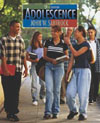A. Peer Conformity
2.1 What is the difference between conformity, nonconformity, and anticonformity?
2.2 At what point does conformity to antisocial peers peak?
B. Peer Statuses
2.3 How would you describe popular children?
2.4 What is the peer status of neglected children?
2.5 How well do rejected children fare among their peers?
2.6 Where do controversial children fit in with their peer group?
C. Social Cognition
2.7 How is social knowledge associated with improved peer relations?
2.8 How do good information processing skills improve peer relations?
2.9 What are the five steps children go through in processing information about their social world?
D. Emotional Regulation in Peer Relations
2.10 What part does the ability to regulate emotion in successful peer relations?
E. Conglomerate Strategies for Improving Social Skills
2.11 How do conglomerate strategies improve social skills?
F. Bullying
2.12 What are the short-term and long-term effects of bullying on its victims?
2.13 What are some strategies that teachers can use to reduce bullying?



 2003 McGraw-Hill Higher Education
2003 McGraw-Hill Higher Education

 2003 McGraw-Hill Higher Education
2003 McGraw-Hill Higher Education